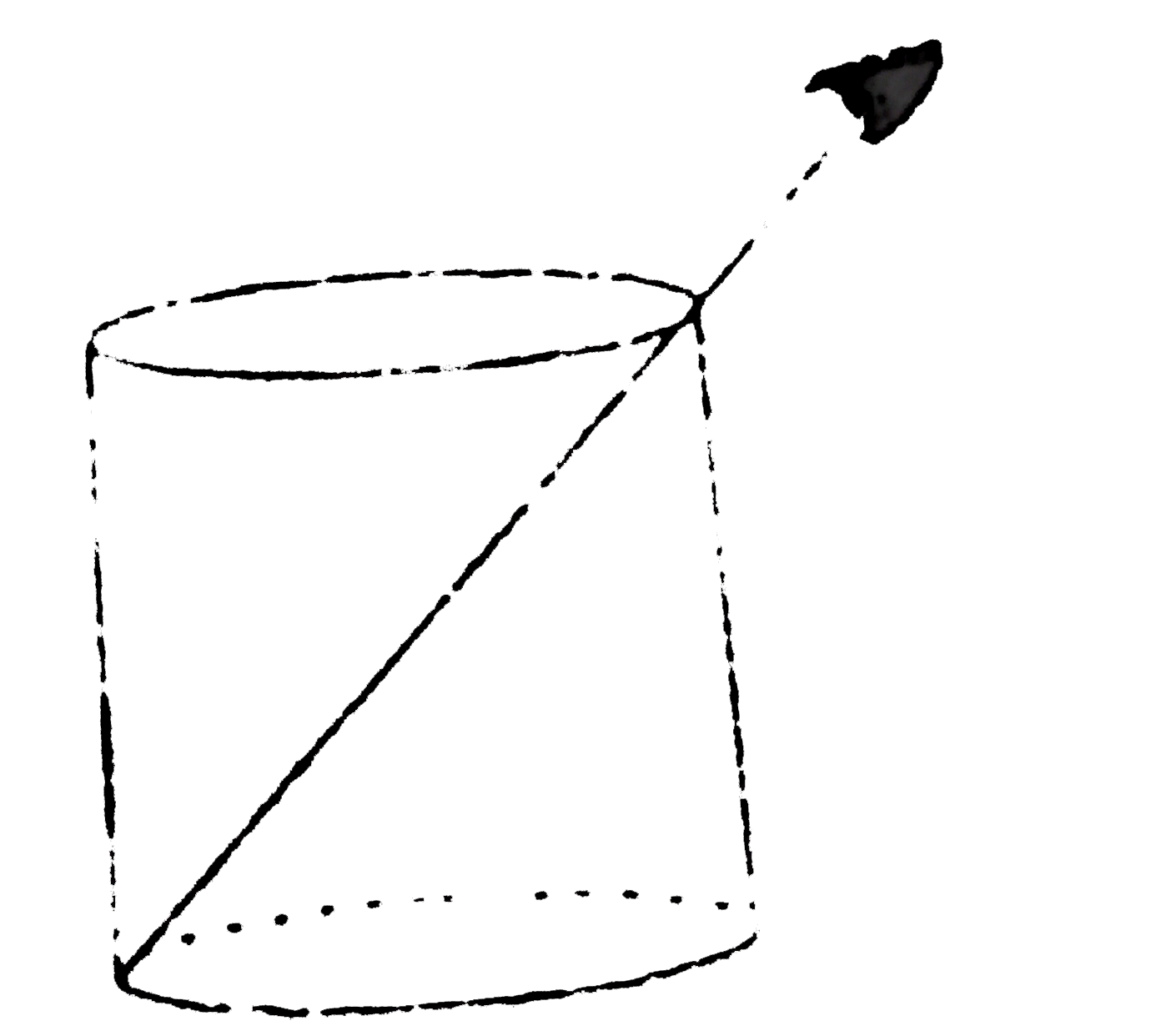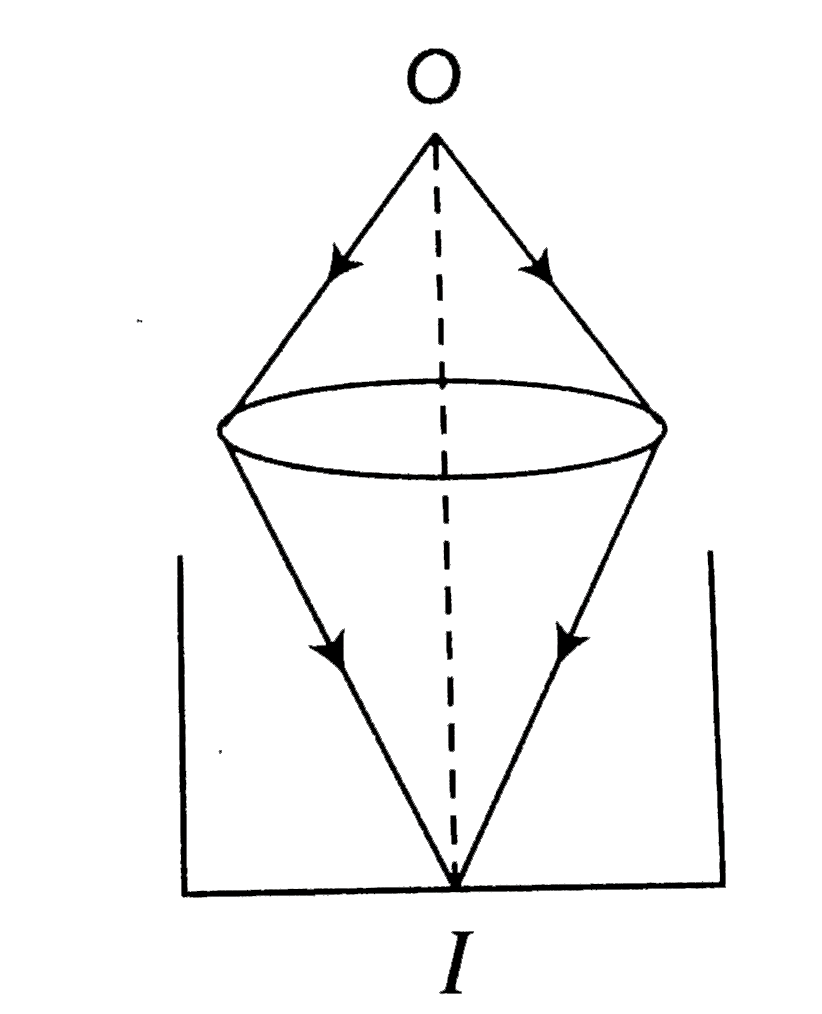A coin in a glass beaker appears to rise as the beaker is slowly filled with water. Why?
It happens on account of refraction of light. A ray of light starting from the coin goes water to air and bends away from normal. Therefore, bottom of the beaker on which the coin lies appears to be raised
Topper's Solved these Questions
- BOOK - PRADEEPCHAPTER - REFLECTION AND REFRACTIONEXERCISE - Higher Order Thinking Skills Q/A6videos
REFLECTION AND REFRACTION
- BOOK - PRADEEPCHAPTER - REFLECTION AND REFRACTIONEXERCISE - Value based Q/A4videos
REFLECTION AND REFRACTION
- BOOK - PRADEEPCHAPTER - REFLECTION AND REFRACTIONEXERCISE - long Q/A7videos
REFLECTION AND REFRACTION
- BOOK - PRADEEPCHAPTER - MAGNETIC EFFECTS OF ELECTRIC CURRENTEXERCISE - Mock Test21videos
MAGNETIC EFFECTS OF ELECTRIC CURRENT
- BOOK - PRADEEPCHAPTER - SOURCES OF ENERGYEXERCISE - Mock Test20videos
SOURCES OF ENERGY
Similar Questions
Take two identical 100cm3 beakers. Fill one beaker completely with water and the other with kerosence oil. Place the beakers in the scale pans of an ordinary beam balance. It is observed that the beaker filled with water have more mass than the beaker filled with kerosene oil. This is because
View SolutionThree letters are written on the internal base of a glass beaker in three different colours, red, blue and green. Now, the beaker is filled with the water. Which of the following coloured letter will be seen least raised when seen through the water ?
View Solution
Knowledge Check
- Question 1 - Select One
A glass beaker of mass 400 kg floats in water with the open end just touching the surface of water and half of the beaker filled with water. The inner volume of the beaker is 500cm3 What is the density of the meterial of the beaker ?
A1.52gcm−3B2.67gcm−3C3.01gcm−3D3.87gcm−3 - Question 2 - Select One
A glass beaker has diameter 4cm wide at the bottom. An observer observes the edge of bottom when beaker is empty as shown in figure. When the beaker is completely filled with liquid of refractive index n=√5/2, he can just see the centre of bottom, then the height of glass beaker is :
 A4cmB√5/2cmC16cmDNone of these
A4cmB√5/2cmC16cmDNone of these - Question 3 - Select One

A real image of an object is formed by a conex lens at the bottom of an empty beaker. The beaker is now filled with a liquid of refractive index 1.4 to a depth of 7 cm. In order to get the image again at the bottom the beaker shoud be movedAdownward by 2 cmBupward by 2 cmCdownward by 3 cmDupward by 3 cm
Apparatus: Beakers.
Chemicals: Samples of various metals , water.
Procedure: Drop a piece of each of the metal in separate beakers filled with cold water.
Which metal floats on water? Why?View SolutionApparatus: Beakers.
Chemicals: Samples of various metals , water.
Procedure: Drop a piece of each of the metal in separate beakers filled with cold water.
Which metal reacts with water?View SolutionA rectangular glass block of thickness 10 cm and refractive index 1.5 placed over a small coin. A beaker is filled with water of refractive index 4/3 to a height of 10 cm and is placed over the glass block.
(a) Find the apparent position of the object when it is viewed at near normal incidence.
(b) if the eye is slowly moves away from the normal at a certain position, the object is found to disappear, due to total internal reflection. At what surface does this happen and why ?View SolutionA spoon partially inserted in beaker filled with water seems bent. Explain.
View SolutionA glass beaker is placed partially filled with water in a sink it has a mass of 390 gm and an interior volume of 500cm2 when water starts filling the sink, it is found that if beaker is less than half full it will float but if it is more than half full it remains on the bottom of the sink as the water rises to its rim, what is the density of the material of which the beaker is made?
View Solution

